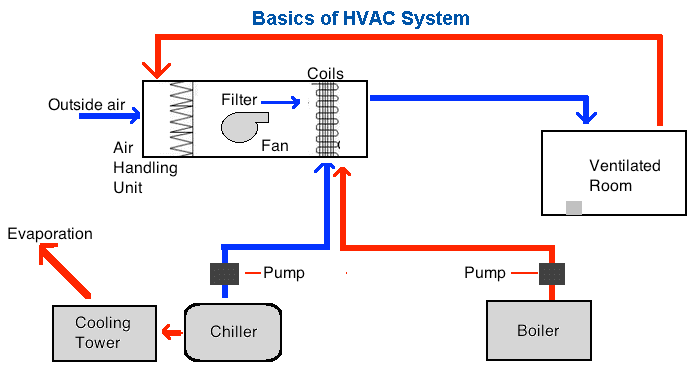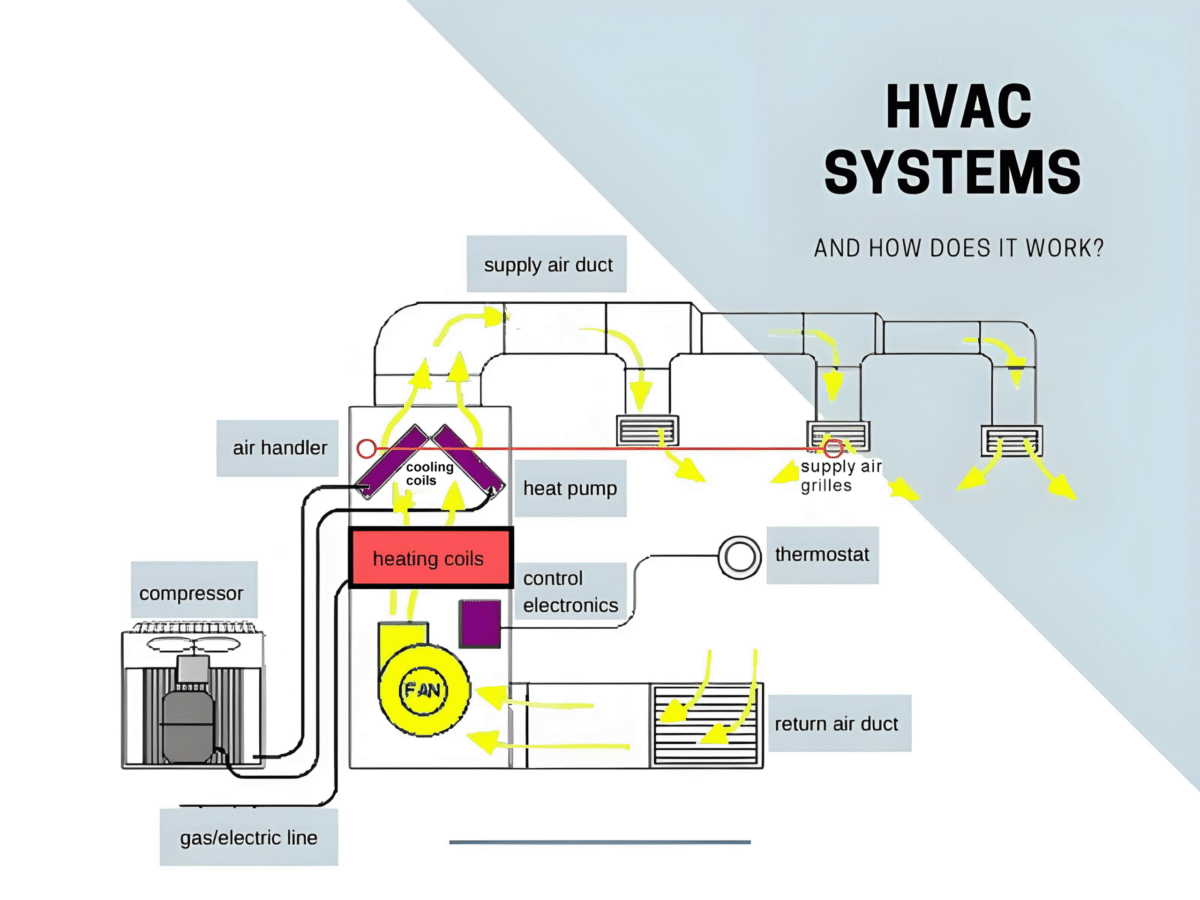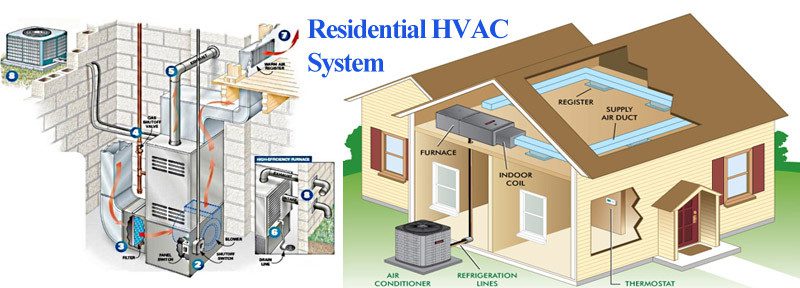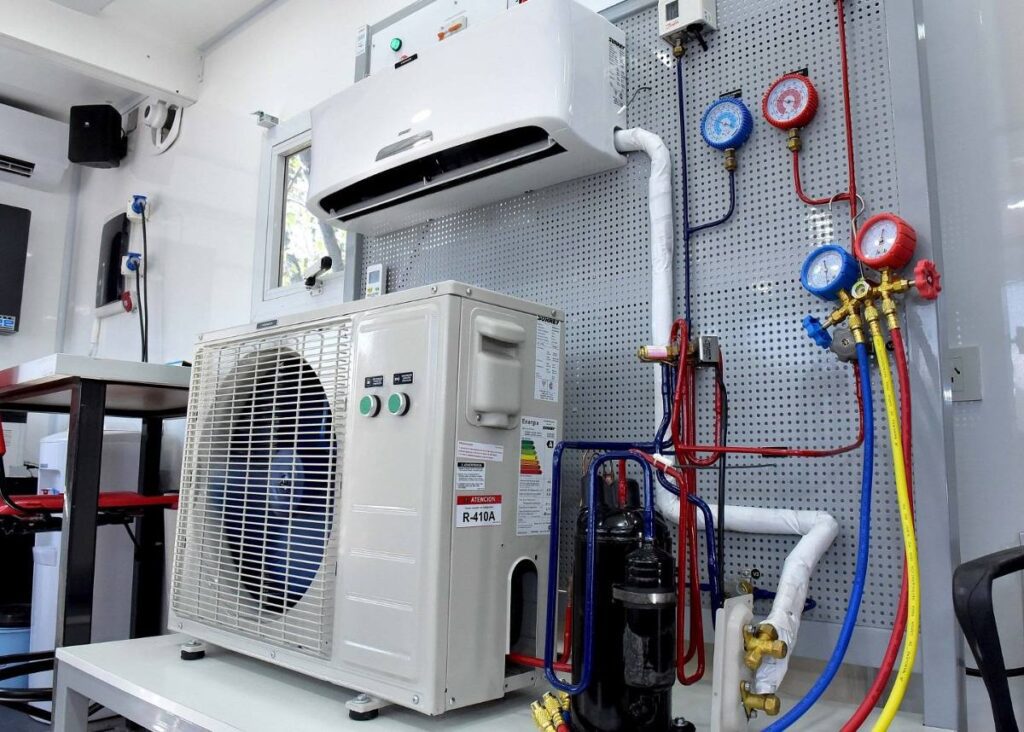I see many buyers confused when they step into HVAC sourcing, because the terms feel broad and unclear.
HVAC means heating, ventilation, and air conditioning. It is a system that manages temperature, humidity, and indoor air quality in every type of building.
I explain this often to new clients, because once they understand the basics, they make better sourcing decisions and avoid price traps.
What does HVAC Mean?

Many buyers think HVAC only means cooling, and they often make wrong choices because of this narrow understanding.
HVAC includes heating, ventilation, and air conditioning. These three parts work together to create stable, efficient, and healthy indoor comfort.
I want to go deeper here because many projects fail when buyers only focus on one function, such as cooling. HVAC is a full system. It manages temperature, humidity, and air movement. Below I break down each part clearly.
Heating
Heating raises indoor temperature during cold seasons. It uses heat pumps, furnaces, boilers, or radiant systems.
Many of my clients in Canada ask for stable heating solutions because winter temperatures drop sharply. I guide them toward systems that work well with PEX and PEX-AL-PEX piping because these pipes handle temperature changes well.
Ventilation
Ventilation removes stale indoor air and brings in fresh air. It also reduces excess moisture.
Good ventilation helps prevent mold. When I worked in a brass factory, I met contractors who tried to solve mold problems by replacing pipes, only to discover the real issue was poor ventilation, not water leaks.
Air Conditioning
Air conditioning lowers indoor temperature and removes humidity.
This part of the system needs reliable connectors, valves, and fittings. Poor-quality piping components often fail under pressure changes, and buyers like Jacky are very sensitive to this risk.
Table: Components of HVAC
| Function | Purpose | Typical Equipment |
|---|---|---|
| Heating | Raise temperature | Heat pump, furnace, boiler, radiant system |
| Ventilation | Replace stale air | Fans, ducts, HRV/ERV units |
| Air Conditioning | Cool and dehumidify air | Compressor, coils, refrigerant lines |
How do HVAC Systems work to Control Indoor Comfort?

Many buyers fear HVAC systems because they look complex. But when broken down, they follow simple steps.
HVAC systems control indoor comfort by heating or cooling air, adjusting humidity, and moving filtered air through ducts and vents.
I want to dig deeper into this because understanding the flow helps you choose correct materials and avoid supplier mistakes.
Step-by-step HVAC Process
1. Air Intake
The system pulls air from indoors or outdoors.
Filters remove dust and particles. Poor-quality filters reduce performance fast.
2. Heating or Cooling
Air passes through a heat exchanger or evaporator coil.
Hydronic heating uses PEX pipes and brass fittings. These must handle pressure and temperature safely.
3. Humidity Control
Humidity drops when air passes through cold coils.
Balanced humidity prevents corrosion, dryness, and discomfort.
4. Air Distribution
Fans push conditioned air through ducts.
I see installation mistakes often here. Poor pipe or duct connections reduce efficiency by up to 30%.
Why It Matters for Sourcing
As a buyer, you need to know which HVAC parts require certifications, which parts need pressure-tested materials, and which parts are easy for suppliers to fake.
From my 20 years in brass manufacturing, I learned that low-quality fittings create leaks that destroy system stability and damage the contractor’s reputation.
What is the difference between AC and HVAC?

Many new buyers ask if AC and HVAC are the same. This confusion affects their sourcing strategy.
AC only cools the air. HVAC includes heating, ventilation, and cooling. HVAC is the full indoor comfort system.
I want to break this down because using the wrong term during sourcing misleads suppliers and leads to wrong quotations.
AC vs HVAC: Detailed Comparison
AC (Air Conditioning)
AC cools air and removes humidity.
It focuses only on cooling.
It includes split units, window units, and central AC.
HVAC
HVAC includes:
- Heating
- Ventilation
- Air Conditioning
It controls full indoor comfort.
This means more components, more design needs, and more installation skill.
Table: AC vs HVAC
| System | Heating | Cooling | Ventilation |
|---|---|---|---|
| AC | No | Yes | No |
| HVAC | Yes | Yes | Yes |
Why Buyers Must Know the Difference
When buyers confuse the two, they often leave out ventilation or heating in RFQs.
This causes wrong quotes, missing parts, delays, and higher future cost.
When I help clients plan hydronic heating, I always confirm if they need full HVAC or only AC. This simple step prevents communication issues.
Is HVAC gas or electric?

This question appears a lot when buyers plan projects and need to meet energy codes.
HVAC can be gas, electric, or hybrid. The choice depends on climate, building size, and cost.
I want to explain this clearly because energy type decides what piping, valves, and certifications you must use.
Gas HVAC Systems
Gas furnaces use natural gas or propane.
They heat fast and work well in cold climates.
They require:
- Gas-certified brass fittings
- Approved valves
- PEX-AL-PEX with gas certification
Some suppliers fake gas certificates.
This is dangerous and creates legal risk.
Electric HVAC Systems
Electric systems use heat pumps or electric heaters.
They are popular in mild climates.
They are often paired with radiant floor systems using PEX piping.
Hybrid Systems
Hybrid systems switch between gas and electricity.
They reduce energy cost but are more complex to install.
Table: Gas vs Electric HVAC
| Type | Strengths | Weaknesses |
|---|---|---|
| Gas | Fast heating, good in cold climates | Needs valid gas certification |
| Electric | Efficient, simple | Higher cost in cold regions |
| Hybrid | Balanced and flexible | More complex installation |
Common Types of HVAC Systems Used Today

Many buyers want to know which HVAC systems are most common so they can prepare correct sourcing plans.
Common HVAC systems include split systems, ductless systems, packaged units, heat pumps, and hydronic systems.
I want to expand because each system uses different piping and fittings.
1. Split System
Most common residential system.
It has indoor and outdoor units.
Heating parts often use PEX or PEX-AL-PEX.
2. Ductless Mini-Split System
Popular in renovation projects.
No ducts needed.
Installers like it because it is fast and clean.
3. Packaged Unit
Heating and cooling are in one single unit.
Often used in commercial buildings and rooftops.
4. Heat Pump System
Heat pumps move heat instead of producing it.
They provide heating and cooling.
They work well with radiant floor heating.
5. Hydronic Heating System
Uses warm water for heating.
Very stable and quiet.
Requires high-quality brass fittings and valves.
I spent most of my career improving hydronic system fitting quality for global buyers, and this system still brings the most loyalty from clients.
Table: Common HVAC Types
| System | Heating | Cooling | Ducts Needed |
|---|---|---|---|
| Split | Yes | Yes | Yes |
| Ductless | Yes | Yes | No |
| Packaged | Yes | Yes | Yes |
| Heat Pump | Yes | Yes | Optional |
| Hydronic | Yes | No | No |
HVAC covers heating, ventilation, and cooling, and understanding these basics helps buyers choose smarter, avoid supplier risks, and plan better projects.
5 world-famous HVAC / HVACR exhibitions:
| Exhibition Name | Date | City | Main Products / Focus |
|---|---|---|---|
| AHR Expo | Feb 10–12, 2025 (UL Solutions) | Orlando, USA (约翰逊控制) | Heating, cooling, refrigeration, ventilation, indoor air quality, building automation, controls (AHR Expo) |
| ISH (Frankfurt) | Mar 17–21, 2025 (vdma.org) | Frankfurt, Germany (InStaff) | HVAC + Water systems, sustainable heating, ventilation, air-conditioning, plumbing & bathroom technology (ISH) |
| Mostra Convegno Expocomfort (MCE) | Mar 24–27, 2026 (mcexpocomfort.it) | Milan, Italy (mcexpocomfort.it) | HVAC+R, heating, cooling, heat pumps, energy efficiency, water solutions, smart building systems (mcexpocomfort.it) |
| Chillventa | Oct 13–15, 2026 (Mueller-Messebau EN) | Nuremberg, Germany (CNS Travel Solutions) | Refrigeration, air-conditioning, ventilation, heat pumps, HVACR components & systems (chillventa.de) |
| China Refrigeration Expo (CR Expo) | Apr 27–29, 2025 (en.cr-expo.com) | Shanghai, China (en.cr-expo.com) | Refrigeration, air-conditioning, heating, ventilation, frozen food processing, storage & HVACR technologies (en.cr-expo.com) |
If you like, I can also include Asia-specific HVAC exhibitions, or a calendar of upcoming shows in 2025 & 2026.



